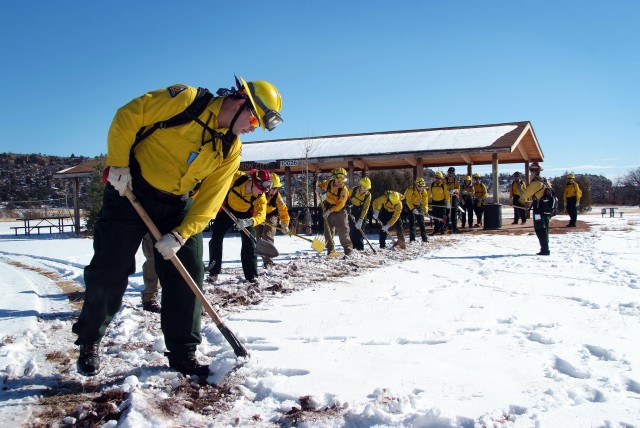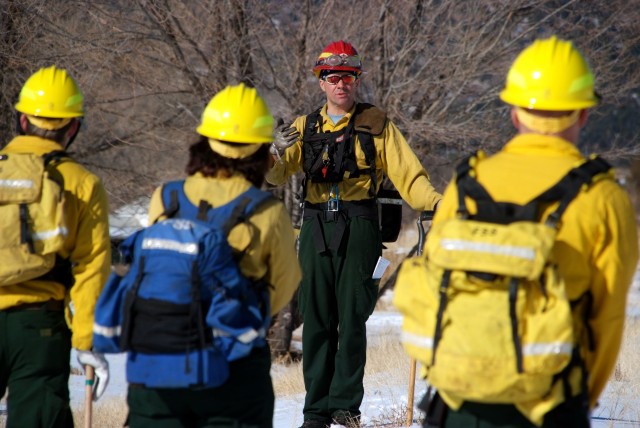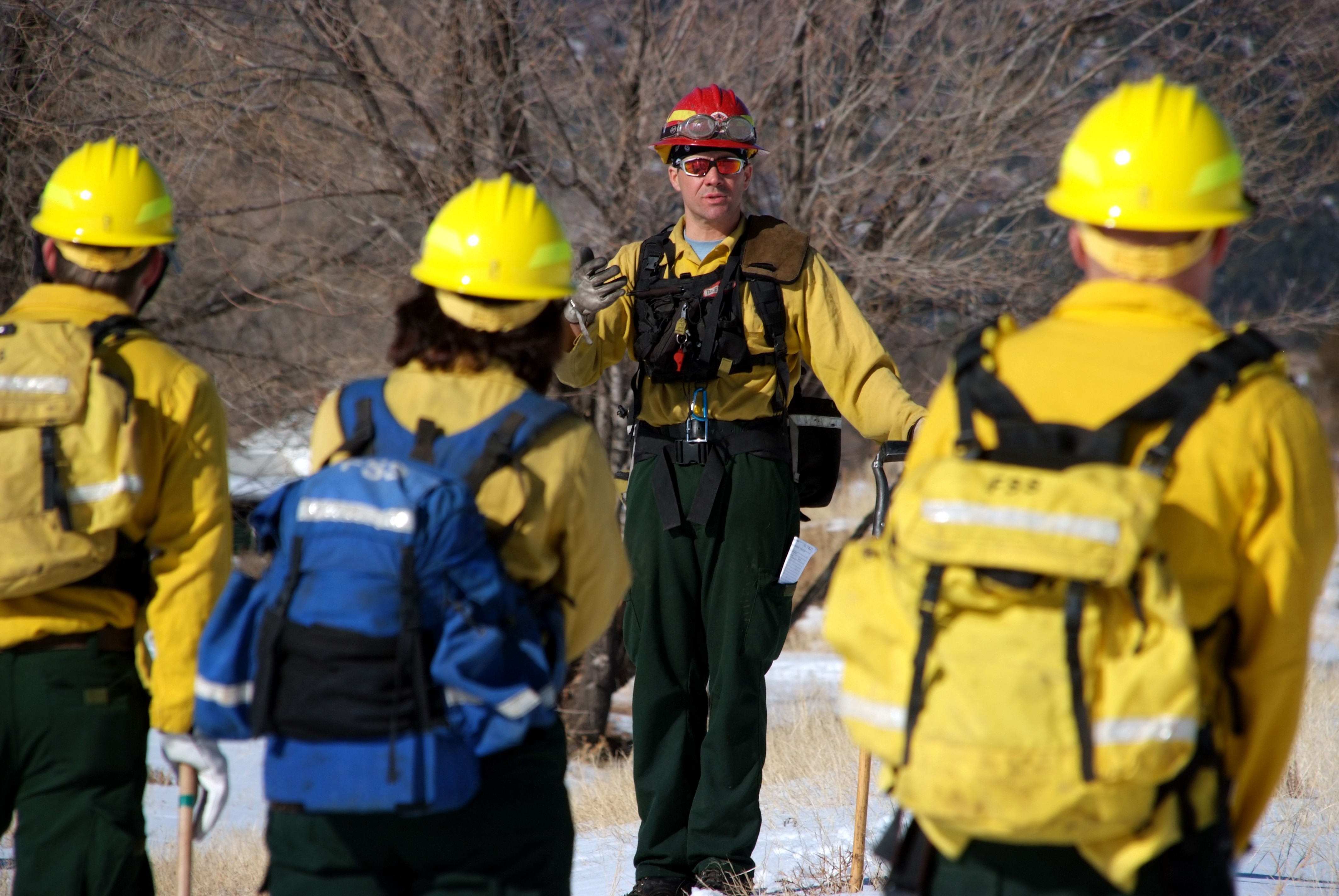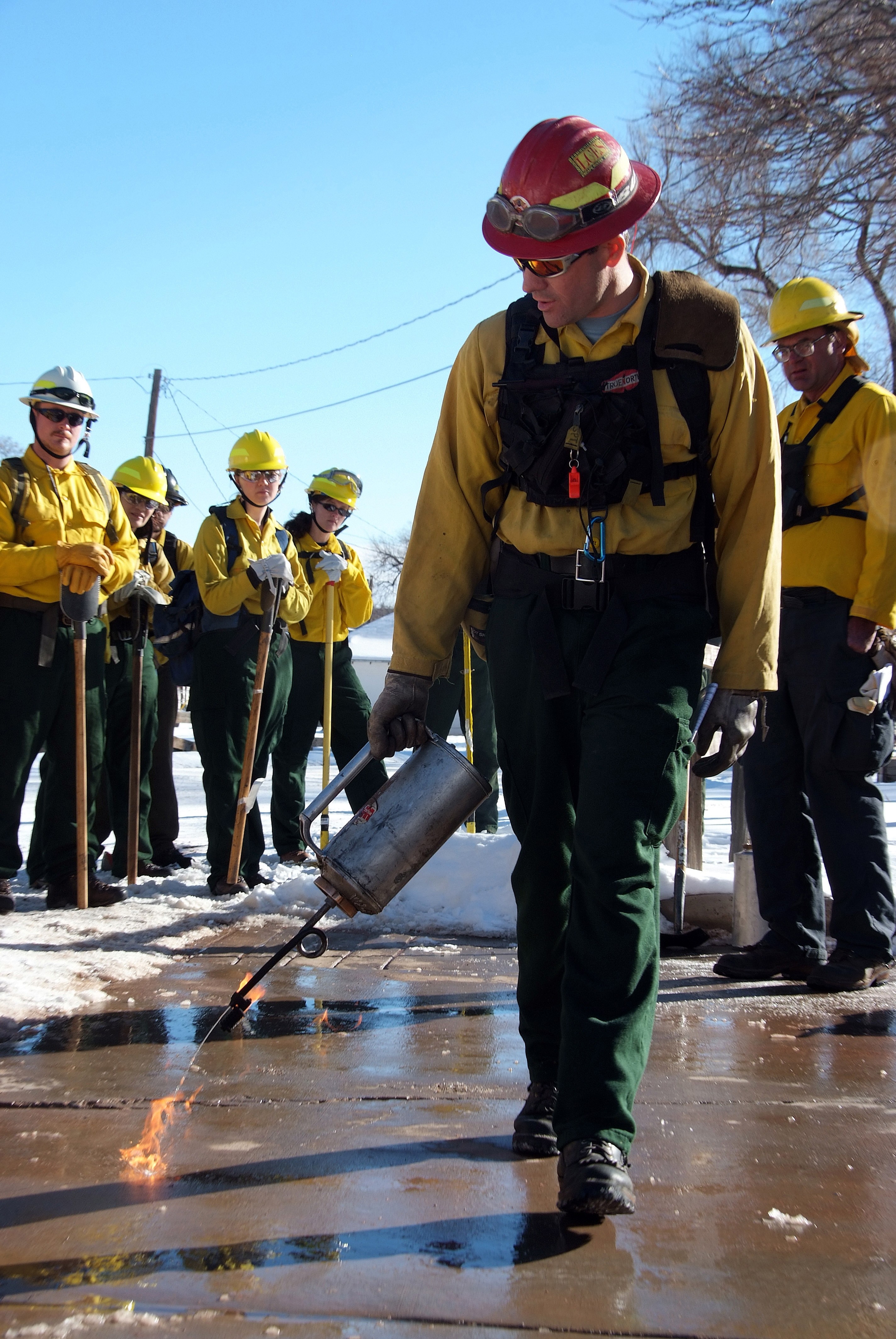FORT CARSON, Colo. -- Fort Carson officials opened Turkey Creek Ranch Jan. 14 for regional wildland firefighter basic training.
The Colorado Wildland Fire and Incident Management Academy culminated a five-day course at Fort Carson, which is intended for entry-level personnel interested in responding to wildland fires. Graduates obtain the minimum training and information necessary to perform nonstructure crew work.
Firefighting Training and Introduction to Wildland Fire Behavior covers incident management organization, firefighting techniques, suppression equipment, safety concerns and fire behavior, according to the CWFIMA S-130/190 course description.
Following four days of classroom studies at Pikes Peak Community College, CWFIMA instructors conducted their final lessons in the field. By 9:30 a.m., Fort Carson Fire Station 34 was encircled by 19 classmates, including career firefighters, college students, archeologists and utility company employees.
Steven Thime, CWFIMA volunteer instructor, began the course's final class with a hands-on explanation of ignition devices. Students practiced with the drip torches and fuses, wildland
tools used in prescribed burns. After two hours at the fire station, he marched his class toward a surrounding tree line.
The students called out tripping hazards and wind conditions while walking at a rushed pace. Their instructor clarified wildfire terminology and shouted out the effects of topography, fuel and weather.
The group moved fast enough to pass the arduous pack test, said Thime, which consisted of carrying a 45-pound pack three miles within 45 minutes. The work capacity test is required for
an Incident Qualification Card, or "red card." The interagency certification ensures a person is qualified to fight a wildland fire.
They entered the woodlands of Training Area 25, where dry bushes and burnt trees sporadically poked through a blanket of snow. The land remained scorched by a wildfire in April 2008.
"What better way to train than to come where you fight fires'" said Thime, who has responded to a dozen wildland fires at Fort Carson. The Colorado Springs Fire Department firefighter and paramedic helped extinguish the massive TA-25 inferno that tore into 9,000 acres.
"Fort Carson is an awesome training area," said Thime, citing transformations in terrain and variations in vegetation. The expeditionary firefighter understands environmental variables - he has engaged rural fires throughout Colorado, Wyoming, Idaho, Utah, New Mexico, Arizona, Oregon and California.
After catching their breath, the class started exercising the creation of scratch lines. The shallow trenches are hastily established as an emergency measure to starve an approaching fire. The width of a scratch line is mostly dependent on the expected front flame height and upcoming wind conditions, said Thime.
The students lined up and etched out the earth, producing an 18-inch groove, using shovels, hoe-like blades, entrenching tools and excavation axes. The column charged into the woodland,
chopping through bushes and branches, while attempting to stay 10 feet away from their adjacent classmate.
"RTO!" said Thime, while routing the line over a hill.
In the classroom, the acronym simply meant "reverse tool order" - today the alarming letters meant instant action.
The class retreated within their twisting scratch line. Woodland equipment clanged against rocks and flame-resistant trousers swooshed in succession. Loosened chin straps caused a couple helmets to shake from side to side. Green brush pants and yellow fire coats became tarnished with charcoal.
"If you're not having fun, then you should probably choose another line of work," said Thime, after stopping the 100-meter sprint, a practice response to a perceived danger. Thime reminded his trainees of the extra equipment weight they'd carry during an actual fire.
"Our instructors have been-there, done-that," said Justin Flint, who volunteered in September for the North-West Fire Protection District in Park County, Colo.
"This is a good class, nice instructors."
Flint says the course is preparing him for seasonal wildland concerns. He helps protect a 278-square-mile area that's more than 9,000 feet above sea level. Windy, dry conditions are expected through April in much of Colorado, according to the National Wildland Significant Fire Potential Outlook.
Erin Leifeld, Bureau of Land Management archeologist, says the training will help her preserve prehistoric and historic artifacts in the Rio Grande National Forest. The course is required for federal archeologists who respond to forest and grassland fires, she said.
Deb Mathis, Colorado Springs Utilities demand-side management and renewable energy program manager, attended the training to protect critical watershed areas subject to high wildfire risks.
"This has been a great class," said Mathis, who had just joined the CSU wildfire team in December. "The class is very informative, lots of information. It has helped us get a feel for what it's like to do crew work."
"I think they all did a great job," said Thime, walking his class over their scratch line, where they reviewed the quality of their efforts. "The scratch line is up to two feet in some places,
but I'm proud of them."






Social Sharing